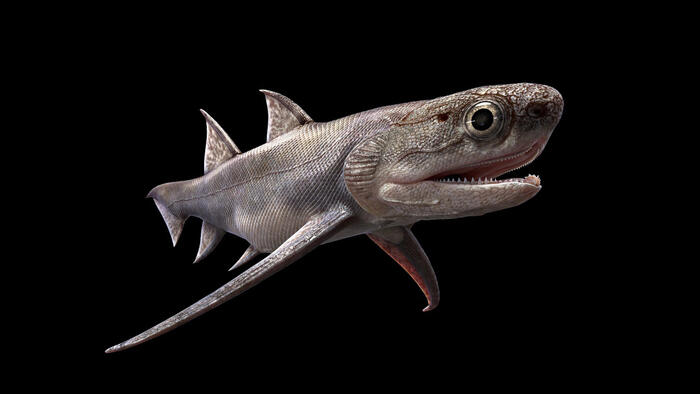'Big fish' in the seas of prehistory: a veritable treasure trove of fossils found in China reveals for the first time the complete anatomy of the first fish with jaws, including the oldest found so far, a distant relative of the living shark 439 million years ago.
In this way, the first stages of the evolution of vertebrates that led to human beings are rewritten.
The discovery, to which Nature dedicates the cover, is published in four studies conducted by an international research group led by Zhu Min of the Institute of Vertebrate Paleontology and Paleoanthropology of the Chinese Academy of Sciences and by Per E. Ahlberg of the University of Uppsala in Sweden.
The fossils were found after 20 years of research in two sites in southwestern China dating back to the Silurian period of the Palaeozoic (436-439 million years ago) and allow to shed light on the mysterious origins of vertebrates with jaws (gnathostomes), category to which 99.8% of modern vertebrates, including humans, belong.
The appearance of the jaws is one of the most important innovations in vertebrate evolution, but until now it was unclear when it occurred: the oldest fossils of gnathostomes found so far were about 425 million years old, while genetic studies indicated that their origin must have been go back at least 25 million years earlier.
Confirmation now comes from new finds found in China, which include placoderms (an extinct group of prehistoric armored fish) and chondrichthyes (a group of cartilaginous fish such as sharks and rays).
The dominant species (with more than 20 specimens) is a placoderm about three centimeters long which has been given the name Xiushanosteus mirabilis.
"As often happens in paleontology, these new fossils date back to the appearance of anatomical structures that allowed an important evolutionary leap, in this case the jaws in vertebrates: this is possible because some of the specimens found have a well-preserved anatomy, which not easy especially when we are talking about fish not yet endowed with a bone skeleton ", comments Cristiano Dal Sasso, paleontologist at the Museum of Natural History in Milan.
"These findings demonstrate an important diversification of the main groups of gnathostomal vertebrates already at the beginning of the Silurian", therefore tens of millions of years earlier than the so-called 'Age of fish' which began 420 million years ago.
What is surprising above all is the perfect conservation of the galeaspid fish, which until now we only knew for the flattened shield-shaped head: the rest of the body, visible in Chinese fossils, made it possible to discover that "they were equipped with two pinnal crests, one on the right. and one on the left, which ran from head to tail and allowed the fish to rise from the bottom to swim freely in the water ", explains Dal Sasso.
"Only later from these two crests did four fins separate: first the pectoral ones and then the pelvic ones, from which the legs evolved and then our arms and legs".
Among the most curious discoveries that emerged from the analysis of the finds is that of the oldest teeth, which belonged to a distant relative of the sharks, who lived 439 million years ago and called Qianodus duplicis.
The fossil dates back to the appearance of the toothed jaws by about 14 million years.











